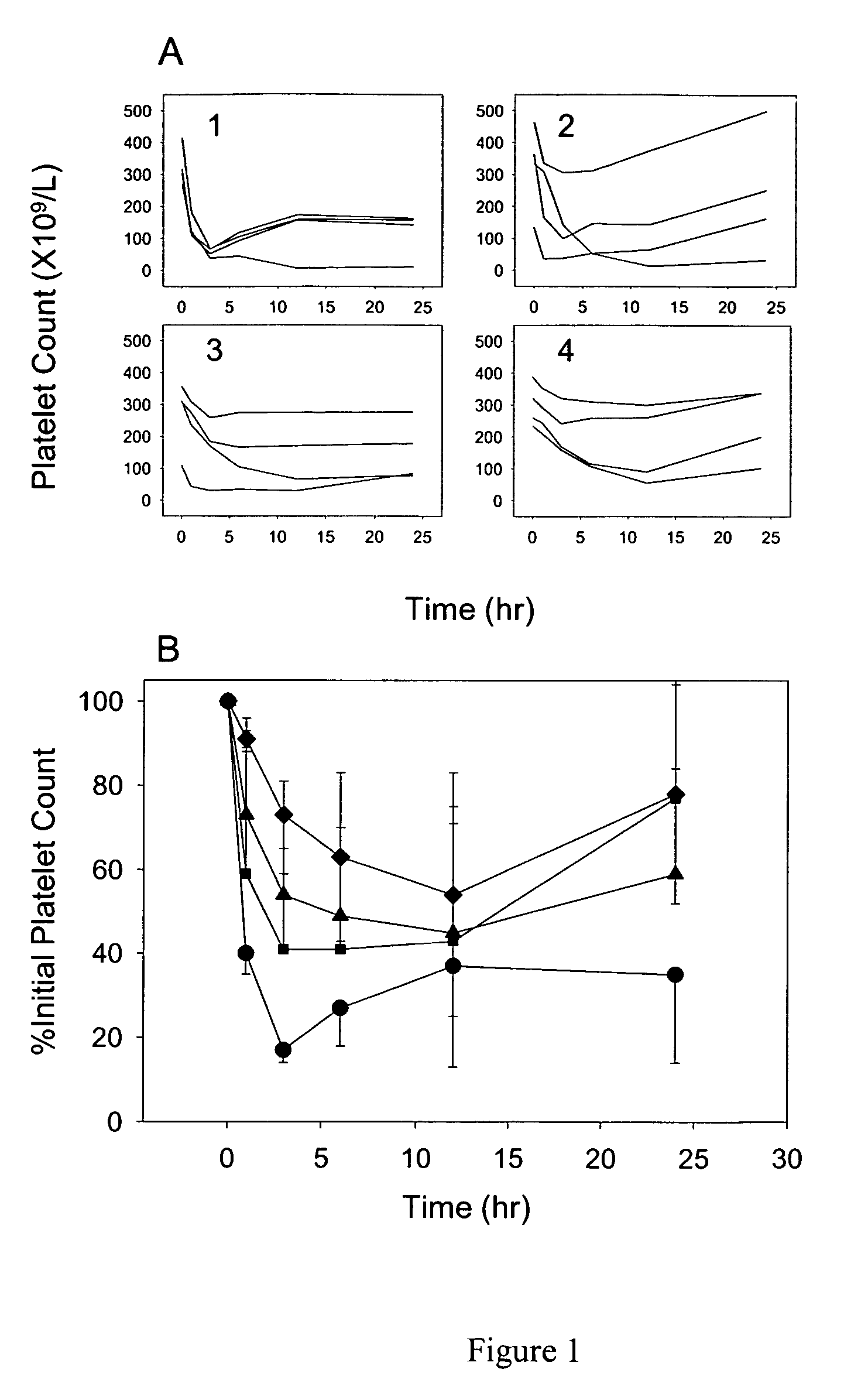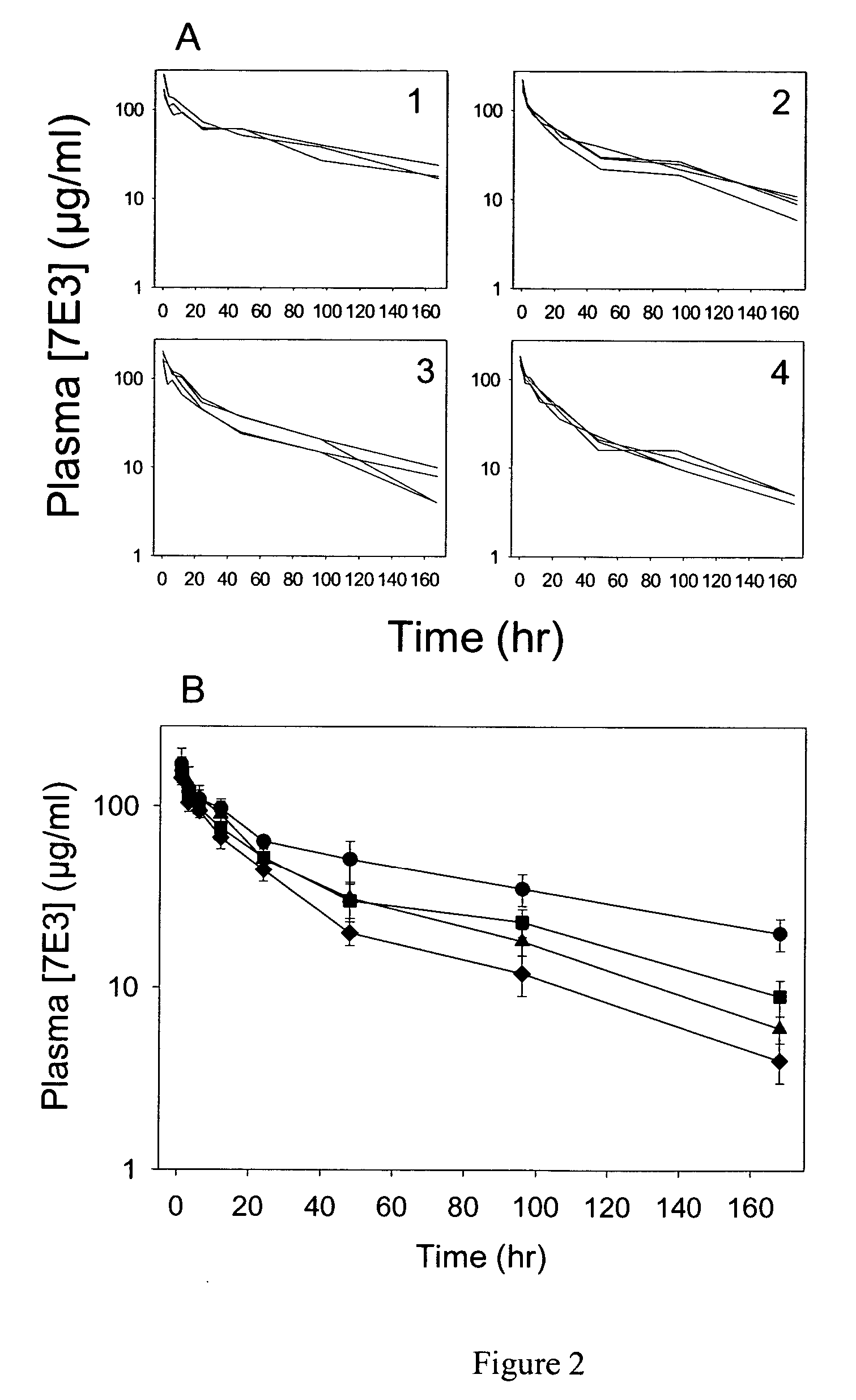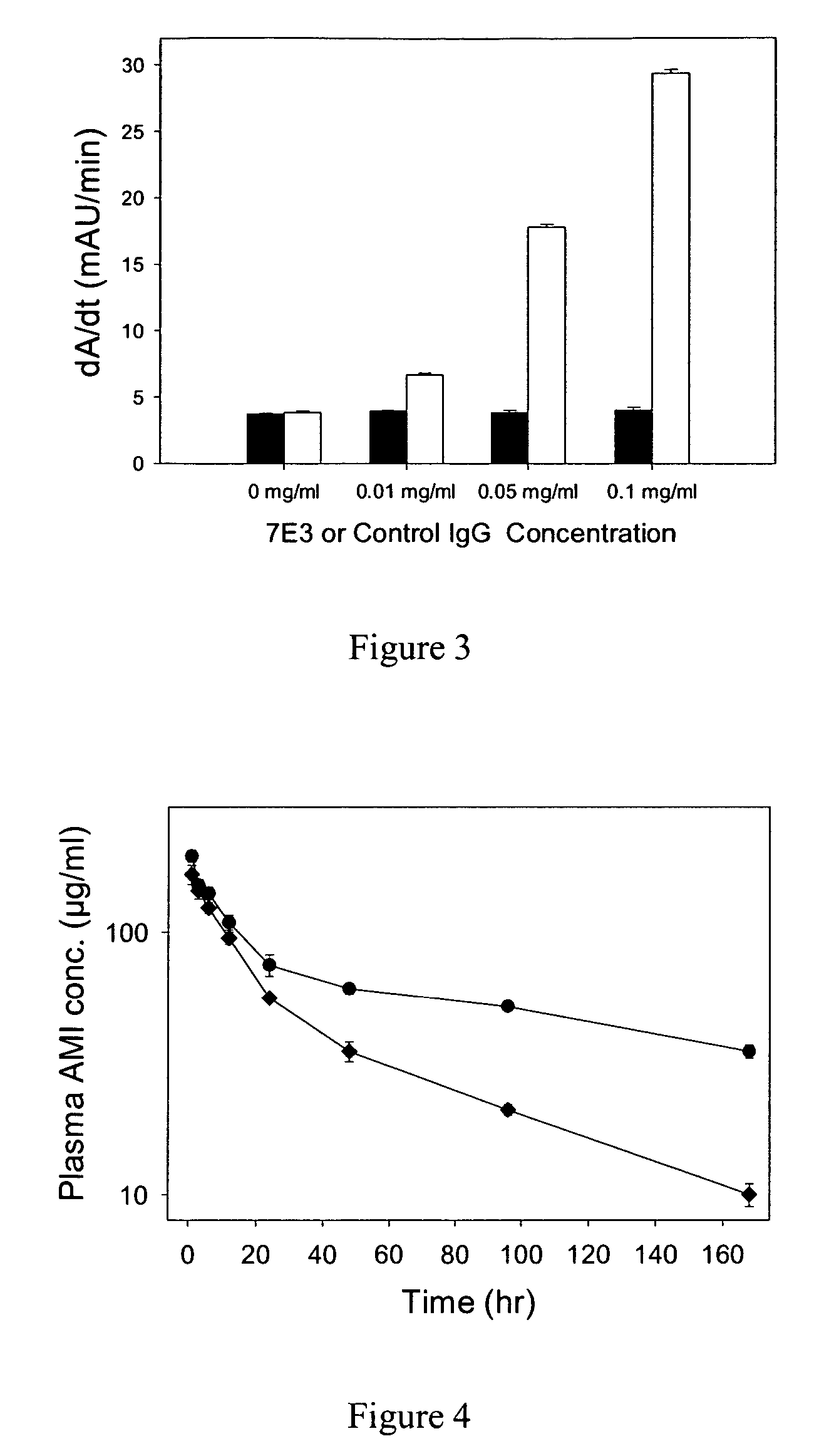Anti-FcRn antibodies for treatment of auto/allo immune conditions
a technology of auto/alloimmune diseases and antibodies, which is applied in the field of auto/alloimmune diseases, can solve the problems of increasing platelet levels, significant hospitalization and treatment costs in specialized hematological departments, and achieve the effect of improving the clearance of pathogenic antibodies and ameliorating an autoimmune diseas
- Summary
- Abstract
- Description
- Claims
- Application Information
AI Technical Summary
Problems solved by technology
Method used
Image
Examples
example 1
[0049] This example describes the general methods used. Female Sprague-Dawley rats, 200 to 225 g, were used for the in vivo analyses. Rats were instrumented with jugular vein catheters 2 days prior to treatment. 7E3, a murine antiglycoprotein IIb / IIIa (GPIIb / IIIa) monoclonal antibody, was produced from hybridoma cells obtained from American Type Culture Collection (Manassas, Va.). Hybridoma cells were grown in serum-free media (Life Technologies®, Rockville, Md.) and antibodies were purified from the media using protein G chromatography. IVIG preparations were obtained from Baxter Healthcare® (Hyland Division, Glendale, Calif.) and Bayer M (Pharmaceutical Division, Elkhart, Ind.). Both IVIG preparations are solvent / detergent-treated and are manufactured via cold ethanol fractionation of human plasma. Outdated human platelets were obtained from the American Red Cross (Buffalo, N.Y. and Salt Lake City, Utah). A murine antimethotrexate IgG1 monoclonal antibody (AMI) was generated and p...
example 2
[0051] This example demonstrates that administration of IVIG clears anti-platelet antibodies in a rat model of IPT. Rats were dosed with IVIG (0.4, 1, or 2 g / kg) via the jugular vein catheter. Following IVIG dosing, a blood sample (0.15 mL) was withdrawn for a baseline measurement of platelet counts. Rats were then dosed with an anti-platelet antibody, 7E3, 8 mg / kg, and platelet counts were taken over 24 hours, using a Cell-Dyne 1700 multiparameter hematology analyzer (Abbott Laboratories®, Abbott Park, Ill.). Control animals were dosed with saline, followed by 7E3. The platelet nadir for each animal was the lowest observed platelet count. Platelet count data were normalized by the initial platelet count because of large interanimal variability in initial platelet counts. By normalizing the data, the effects of 7E3 and IVIG can be better compared between animals. Blood samples (0.15 mL) were taken for pharmacokinetic analysis at 1, 3, 6, 12, 24, 48, 96, and 168 hours after 7E3 dosin...
example 3
[0054] This example describes the pharmacokinetic of the effects of IVIG on 7E3. To determine this, 7E3 plasma concentrations following pretreatment of the rats with IVIG were measured. It was observed that IVIG enhanced the clearance of 7E3, as can be seen from FIG. 2 and Table 1. An ANOVA revealed highly significant differences between the clearance values calculated for the 4 treatment groups (P<0.001). Differences in 7E3 clearance were shown to be statistically significant for all pairs of treatment groups, except for the comparison of data from animals receiving 0.4 versus 1 g / kg IVIG (Tukey multiple comparisons test). Significant differences from control were seen in 7E3 concentrations at each time point at 12 hours and longer for the 2-g / kg IVIG group, and at least 48 hours for the 0.4- and 1-g / kg IVIG groups.
TABLE 1Effect of IVIG on the elimination of 7E3Dose of IVIG,Clearance of 7E3, mL h−g / kg1kg−1*t1 / 2, h†00.78 ± 0.0979 ± 110.41.28 ± 0.19‡68 ± 611.37 ± 0.28§54 ± 17‡21.85...
PUM
| Property | Measurement | Unit |
|---|---|---|
| concentrations | aaaaa | aaaaa |
| concentrations | aaaaa | aaaaa |
| pH | aaaaa | aaaaa |
Abstract
Description
Claims
Application Information
 Login to View More
Login to View More - R&D
- Intellectual Property
- Life Sciences
- Materials
- Tech Scout
- Unparalleled Data Quality
- Higher Quality Content
- 60% Fewer Hallucinations
Browse by: Latest US Patents, China's latest patents, Technical Efficacy Thesaurus, Application Domain, Technology Topic, Popular Technical Reports.
© 2025 PatSnap. All rights reserved.Legal|Privacy policy|Modern Slavery Act Transparency Statement|Sitemap|About US| Contact US: help@patsnap.com



